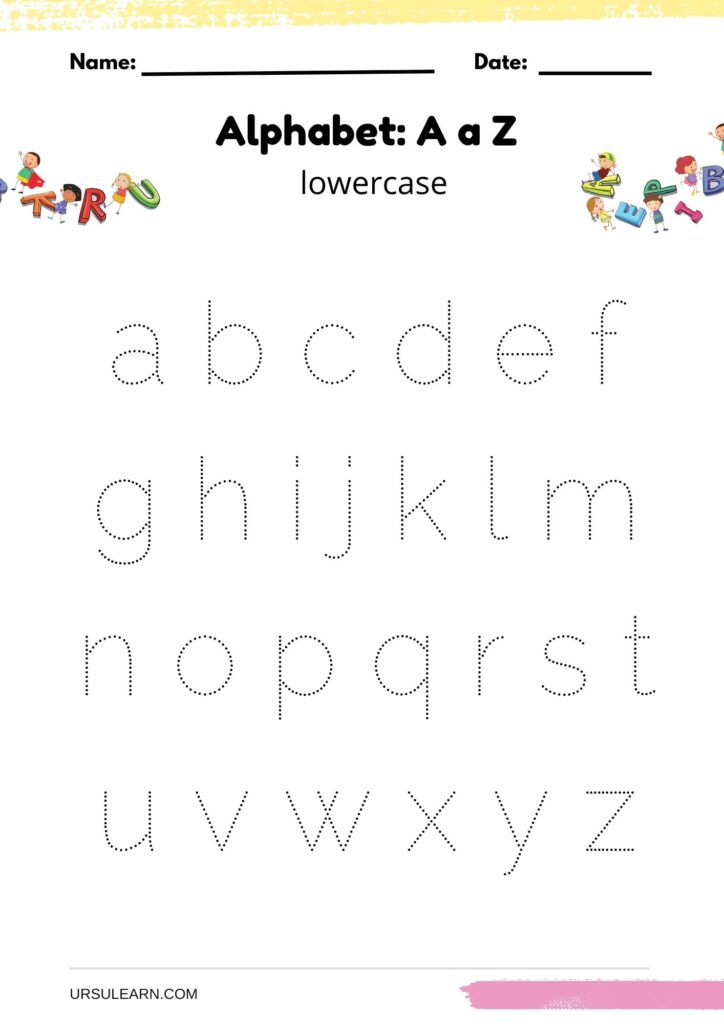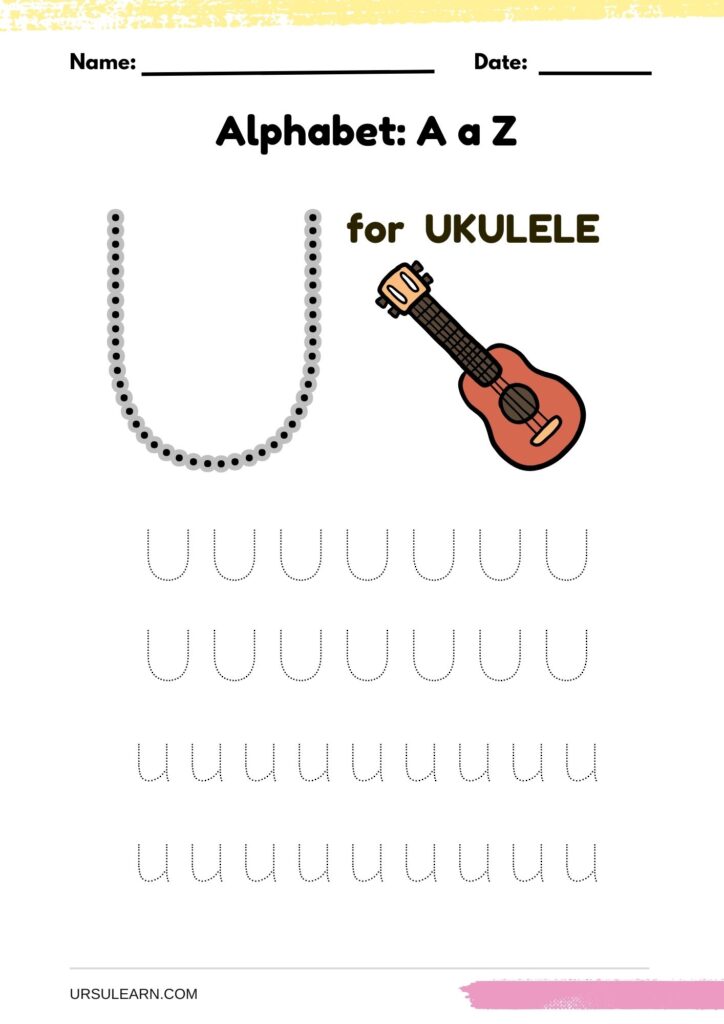Today, we bring you various alphabet tracing worksheets to help children in their literacy journey. Typically, this is one of the first steps toward full literacy for students.
When teaching or training children, it’s important to start in a fun way due to how children think and interact.
The first step is always the hardest, especially for little ones. That’s why children often lose interest or refuse to start an activity that seems too dull right from the beginning.
However, one thing that captivates them, particularly from age 3 onward, is tracing. They naturally enjoy drawing and scribbling from a young age, but at around 3 years old, they start to take more interest in alphabet tracing and creating meaningful shapes.
At this stage of development, tracing activities using a dotted alphabet fit perfectly. During this phase of early childhood education, we aim to, and can benefit from, starting the child’s literacy journey, making this type of activity an ideal opportunity.
How to Use Alphabet Tracing Worksheets
After downloading and printing the alphabet template you prefer, let the child try tracing over the dotted letters on their own.
At first, they may not be very successful, as their motor coordination might still be underdeveloped. It’s important not to push the child too hard in the beginning. The best way for them to learn is through fun, and too much pressure in a stressful moment can have the opposite effect.
After a few attempts, the tracing will likely become much more consistent, and most importantly, the child will begin to recognize and familiarize themselves with the shapes of the letters.
You can print multiple sheets of the same letter because the future writer will want to keep practicing, especially if the first attempts didn’t turn out as expected.
Benefits of Alphabet Tracing Worksheets
These handwriting practice worksheets are perfect for parents, teachers, and students looking to improve literacy skills while providing fine motor skill exercises. Additionally, these dotted alphabet sheets are suitable for toddlers, preschoolers, and early childhood education. Use these alphabet tracing worksheets in schools, as extra practice, as part of your homeschool curriculum, during holiday learning, or alongside books that introduce the letters of the alphabet.
Enhancing Literacy with Image-Word Association Activities
Associating images with words is a powerful tool in literacy education, providing an engaging way to build fundamental skills.
Visual Association
These activities help students create visual connections between objects and their corresponding words. Seeing an image and linking it to the correct term reinforces vocabulary comprehension and retention. This is particularly beneficial for visual learners who thrive on imagery.
Contextual Learning
Linking images to words offers contextual learning, enabling students to understand words in practical terms. For example, associating the image of an apple with the word helps students connect language to everyday experiences, fostering deeper understanding.
Cognitive Engagement
These activities engage multiple cognitive processes, enhancing memory retention and recognition skills. Activities like these often require critical thinking, as students assess and decide which words align with specific images.
Independent Practice
Image-word association activities can be used in classrooms or at home, supporting diverse learning environments. They provide opportunities for students to practice independently, reinforcing what they’ve learned in a structured and enjoyable format.
By offering a visually stimulating and context-rich environment, these literacy activities make learning more accessible and effective, paving the way for improved reading and comprehension skills.
Conclusion
These alphabet tracing worksheets can also be laminated, allowing students to complete them with a dry-erase marker and reuse them after wiping clean. Whether you are a parent, teacher, homeschooler, or preschool educator, you’ll enjoy these alphabet activities for children of all ages.
By using these free printable handwriting practice worksheets, your children will develop proficiency in writing alphabet letters from A to Z. Students can also practice cursive writing, an essential skill for effective handwriting.
Pre-writing is the first step for children before learning to write. This skill is necessary and helps strengthen various other abilities.
Pre-writing can aid in fine motor skills, overall hand strength, and individual finger strength, all of which are crucial for holding a pencil correctly. This is vital for producing legible handwriting.
Eye-hand coordination and bilateral coordination are also improved through pre-writing activities. These coordination skills are essential for writing as well.
Pre-writing activities can help children expand their focus and increase their attention span, both of which are important for learning new things.
This alphabet tracing activity specifically helps children strengthen letter recognition as well as early sound skills.
Below are the alphabet tracing handwriting practice worksheets ready for download:




























Leave a Reply